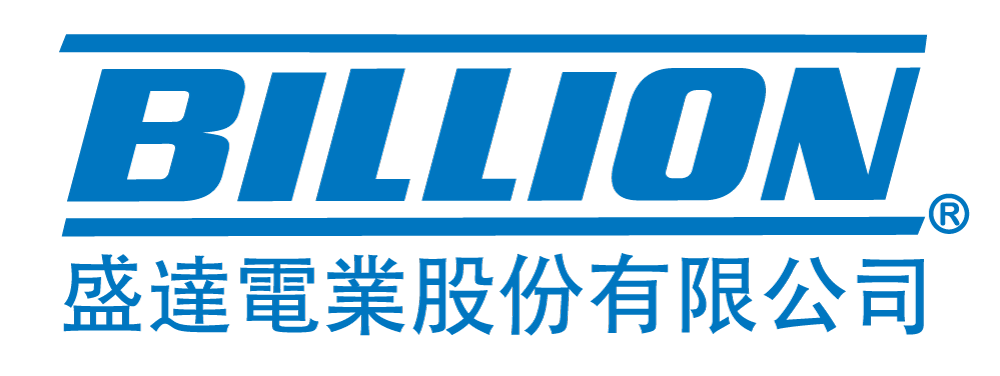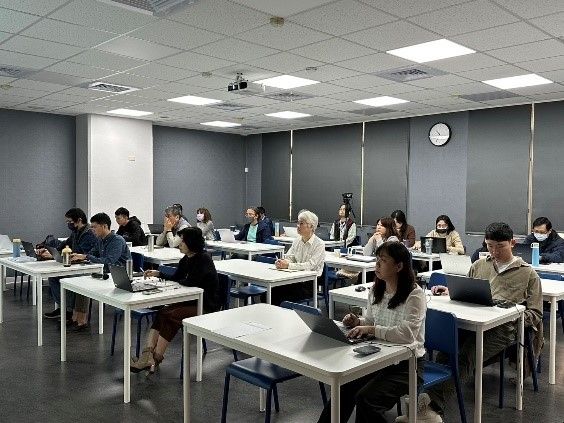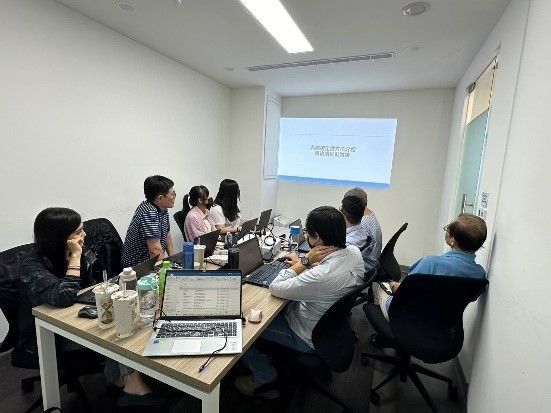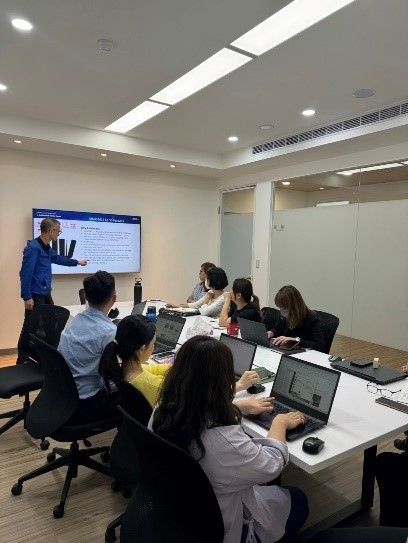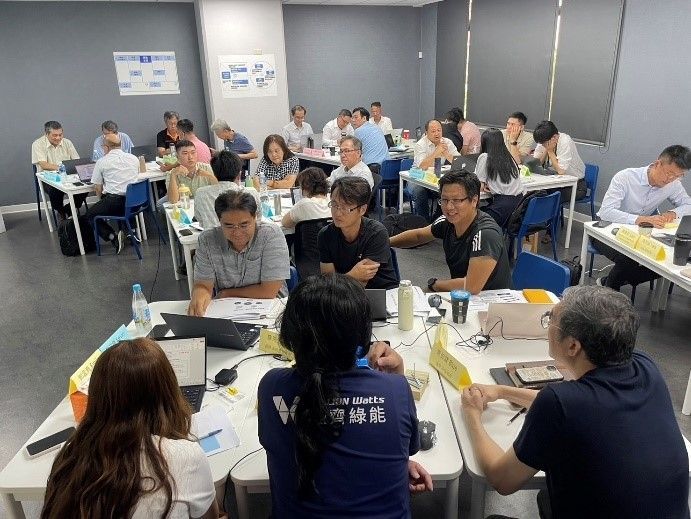Towards a Happy Workplace
Employees are the most important asset of the Company and also a crucial factor in its the stable development of the Company. Billion has established relevant regulations and rules to protect the rights and interests of employees, strictly abides by labor and human rights standards, treats and respects all employees fairly continuously promotes employee care, promotes the physical and mental health of employees. Through fair employment and promotion systems, seeks talents with different backgrounds and expertise, continuously develops personal ability cultivation, and creates a "win-win" working environment for employees and Billion.
Sustainable Workforce
Talent Recruitment and Retention
The starting salary of men and women is in line with the minimum salary under the Labor Standards Act. However, the salary still considers seniority and work performance, so there is a difference in the salary ratio of job categories. The salary ratio in 2024 is as follows:
| Billion | ||||
|---|---|---|---|---|
| Salary ratio by job category | No. of Employees | Salary Ratio | ||
| Female | Male | Female | Male | |
| Management | 7 | 12 | 1 | 0.97 |
| Non-Management Roles | 38 | 28 | 1 | 1.51 |
| Direct Personnel | 10 | 0 | 1 | 0.00 |
| Indirect Personnel | 35 | 40 | 1 | 1.32 |
Note:
1. Female-to-male salary ratio (annual salary ratio): "Average annual salary of men in this category / Average annual salary of women in this category".
2. The reason for the higher proportion of male pay is that the seniority is higher, and the bonuses and surplus dividends are higher.
3. The remuneration of personnel who are less than one year of remuneration is not included in the calculation.
| BEC Technologies | ||||
|---|---|---|---|---|
| Salary ratio by job category | No. of Employees | Salary Ratio (All employees are less than one year) | ||
| Female | Male | Female | Male | |
| Management | 1 | 6 | - | - |
| Non-Management Roles | 8 | 10 | - | - |
| Direct Personnel | 0 | 0 | - | - |
| Indirect Personnel | 9 | 16 | - | - |
Note:
1. Female-to-male salary ratio (annual salary ratio): "Average annual salary of women in this category / Average annual salary of men in this category".
2. The reason for the higher proportion of male pay is that the seniority is higher, and the bonuses and surplus dividends are higher.
3. The remuneration of personnel who are less than one year of remuneration is not included in the calculation.
| Billion Watts | ||||
|---|---|---|---|---|
| Salary ratio by job category | No. of Employees | Salary Ratio | ||
| Female | Male | Female | Male | |
| Management | 3 | 9 | 1 | 0.89 |
| Non-Management Roles | 30 | 51 | 1 | 1.17 |
| Direct Personnel | 0 | 0 | - | - |
| Indirect Personnel | 33 | 60 | 1 | 1.10 |
Note:
1. Female-to-male salary ratio (annual salary ratio): "Average annual salary of women in this category / Average annual salary of men in this category".
2. The reason for the higher proportion of male pay is that the seniority is higher, and the bonuses and surplus dividends are higher.
3. The remuneration of personnel who are less than one year of remuneration is not included in the calculation.
| Billion EVC | ||||
|---|---|---|---|---|
| Salary ratio by job category | No. of Employees | Salary Ratio | ||
| Female | Male | Female | Male | |
| Management | 1 | 2 | 1 | 1.41 |
| Non-Management Roles | 3 | 2 | 1 | 1.72 |
| Direct Personnel | 0 | 0 | - | - |
| Indirect Personnel | 4 | 4 | 1 | 1.51 |
Note:
1. Female-to-male salary ratio (annual salary ratio): "Average annual salary of men in this category / Average annual salary of women in this category".
2. The reason for the higher proportion of male pay is that male men are paid more because they are more skilled, senior and experienced.
3. The remuneration of personnel who are less than one year of remuneration is not included in the calculation.
| Noonspare | ||||
|---|---|---|---|---|
| Salary ratio by job category | No. of Employees | Salary Ratio | ||
| Female | Male | Female | Male | |
| Management | 2 | 11 | 1 | 1.96 |
| Non-Management Roles | 7 | 11 | 1 | 1.29 |
| Direct Personnel | 1 | 4 | - | 1 |
| Indirect Personnel | 8 | 18 | 1 | 1.38 |
Note:
1. Female-to-male salary ratio (annual salary ratio): "Average annual salary of men in this category / Average annual salary of women in this category".
2. The reason for the higher proportion of male pay is that male men are paid more because they are more skilled, senior and experienced.
3. The salary of personnel who are less than one year is not included in the calculation, and there is only one female direct employee who is less than one year, so it is not included in the calculation.
| Country/ Region | Ratio of standard entry level wage for male employees to local minimum wage | Ratio of standard entry level wage for female employees to local minimum wage |
|---|---|---|
| Billion | 1.31 times | 1 times |
| Billion Watts | 1.31 times | 1.13 times |
| Billion EVC | 2.35 times | 1.52 times |
| NoonSpare | 1.13 times | 1.13 times |
| BEC Taiwan | 1.53 times | 1.4 times |
Notes:
- Employees' basic salaries do not differ due to gender, race, religion, political stance, marital status, union membership, etc., but may differ considering factors such as education, work experience, and job performance.
- The local minimum wage is the 2024 government-announced basic w age of NT$27,470 per month by the Ministry of Labor.
- The reason for the higher ratio of male salaries compared to local wages is because males have higher technical levels, longer years of service, and deeper experience.
| Country | The ratio of the annual total compensation of the company’s highest-paid individual to the median of the annual total compensation of all employees (excluding the highest-paid individual) | The ratio of the percentage increase in annual total compensation for the company’s highest-paid individual to the percentage increase in the median of the annual total compensation of all employees (excluding the highest-paid individual) |
|---|---|---|
| Billion | 4.55 | 5.01 |
| Billion Watts | 4.41 | 1.28 |
| Billion EVC | 2.11 | 0.41 |
Notes:
- Median pay ratio calculation: The ratio of the annual total compensation of the highest paid individual to the median of the annual total compensation of all other employees (excluding the highest-paid individual).
- Pay increase ratio calculation: The ratio of the percentage increase in the annual total compensation of the highest-paid individual to the median percentage increase in the average annual total compensation of all other employees (excluding the highest-paid individual).
- Billion EVC designs its compensation structure based on job responsibilities, performance, and market salary benchmarks. In 2024, the ratio of the annual total compensation of the highest-paid individual to the median of all other employees’ annual total compensation was -0.41:1. Some bonus components have not yet been disbursed and are reasonably estimated based on the company’s incentive system and historical payout levels. This ratio reflects the differentiation in responsibilities and compensation mechanisms for management roles. The company remains committed to enhancing fairness and transparency in its compensation practices.
- NoonSpare was newly included in the reporting scope in 2024; therefore, no prior-year data is available.
- BEC Taiwan was established in August 2024 and does not yet have full-year compensation data.
In accordance with regulatory requirements, the Company discloses salary information for full-time employees not holding managerial positions. Compared to 2023, both the average salary and median salary for 2024 increased. This was primarily due to some employees receiving lump-sum payments of pension benefits under the old system, which contributed to the rise in the average salary figure. The salary data for full-time non-managerial employees in 2024 is presented in the table below.
| Item | Taiwan Region |
|---|---|
| Number of full-time employees not holding managerial positions (persons) | 89 |
| Total annual salary of full-time employees not holding managerial positions (NTD thousands) | 77,253 |
| Average annual salary of full-time non-managerial employees (NTD thousands) | 868 |
| Median annual salary of full-time non-managerial employees (NTD thousands) | 882 |
Note:
- The statistics for the Taiwan region reflect only the scope of publicly listed companies and are aligned with disclosures on the Taiwan Market Observation Post System.
- The number of full-time employees represents the annual average.
Local Employee Care
Since its establishment in 1973, Billion Group has been based in Xindian District, New Taipei City, for over 52 years. To support local employment, Billion, BEC Technologies, and Billion Watts have consistently hired local residents. As of July 31, 2025, among the 198 total employees, 58 live in Xindian and 26 in Wenshan District, resulting in a local employment ratio of 36%.
| Company | Total Employees | Employees Living in Xindian District | Employees Living in Wenshan District | Subtotal | Local Employment Ratio |
|---|---|---|---|---|---|
| Billion | 83 | 30 | 10 | 40 | 48% |
| BEC Taiwan | 26 | 3 | 1 | 4 | 15% |
| Billion Watts | 89 | 25 | 15 | 40 | 45% |
Talent Cultivation and Development
Billion Group places strong emphasis on talent development and growing together with its employees. To strengthen employee competencies and meet the company's development needs, the Group has established a Human Resource Management Procedure, through which training programs are planned based on job categories and practical requirements, balancing operational efficiency and individual career development.
The training framework covers new employee onboarding, professional development, leadership training, job rotation training, and strategic programs. It targets all employees and management levels, with diverse formats including in person sessions, online learning, and external seminars. Post-training assessments, feedback collection, and effectiveness evaluations are conducted based on the nature of each course, and employees are encouraged to pursue relevant certifications.
At the end of each year, all departments submit training plans for the following year, which are then consolidated and approved by the General Manager. Aside from mandatory courses, all other training programs are flexibly designed based on operational practices and strategic needs to ensure that employee development progresses in step with the company’s growth.
| Billion | ||||||||
|---|---|---|---|---|---|---|---|---|
| Item / Category | Managerial Staff (Male) | Managerial Staff (Female) | Non-Managerial Staff (Male) | Non-Managerial Staff (Female) | Direct Employees (Male) | Direct Employees (Female) | Indirect Employees (Male) | Indirect Employees (Female) |
| Total Number of Employees | 12 | 7 | 27 | 39 | 0 | 10 | 40 | 35 |
| Total Training Hours (Hours) | 343.5 | 358 | 659 | 650 | 0 | 119 | 1002.5 | 889 |
| Average Training Hours per Employee (Hours/Person) | 18.13 | 51.14 | 24.41 | 16.67 | 0 | 11.9 | 25.06 | 25.4 |
| Training Expenses (NTD) | 44,660 | 28,000 | 14,060 | 62,200 | 0 | 0 | 58,720 | 90,200 |
| Billion Watts | ||||||||
|---|---|---|---|---|---|---|---|---|
| Item / Category | Managerial Staff (Male) | Managerial Staff (Female) | Non-Managerial Staff (Male) | Non-Managerial Staff (Female) | Direct Employees (Male) | Direct Employees (Female) | Indirect Employees (Male) | Indirect Employees (Female) |
| Total Number of Employees | 9 | 3 | 51 | 30 | 0 | 0 | 60 | 33 |
| Total Training Hours (Hours) | 83.5 | 98.5 | 632.5 | 259 | 0 | 0 | 716 | 357.5 |
| Average Training Hours per Employee (Hours/Person) | 9.28 | 32.83 | 12.4 | 8.63 | 0 | 0 | 11.93 | 10.83 |
| Training Expenses (NTD) | 12,690 | 74,190 | 152,676 | 32,500 | 0 | 0 | 165,366 | 106,690 |
| Billion EVC | ||||||||
|---|---|---|---|---|---|---|---|---|
| Item / Category | Managerial Staff (Male) | Managerial Staff (Female) | Non-Managerial Staff (Male) | Non-Managerial Staff (Female) | Direct Employees (Male) | Direct Employees (Female) | Indirect Employees (Male) | Indirect Employees (Female) |
| Total Number of Employees | 3 | 1 | 5 | 7 | 0 | 0 | 8 | 8 |
| Total Training Hours (Hours) | 19.5 | 6.5 | 32.5 | 45.5 | 0 | 0 | 52 | 52 |
| Average Training Hours per Employee (Hours/Person) | 6.5 | 6.5 | 6.5 | 6.5 | 0 | 0 | 6.5 | 6.5 |
| Training Expenses (NTD) | 0 | 0 | 0 | 0 | 0 | 0 | 0 | 0 |
| BEC Taiwan | ||||||||
|---|---|---|---|---|---|---|---|---|
| Item / Category | Managerial Staff (Male) | Managerial Staff (Female) | Non-Managerial Staff (Male) | Non-Managerial Staff (Female) | Direct Employees (Male) | Direct Employees (Female) | Indirect Employees (Male) | Indirect Employees (Female) |
| Total Number of Employees | 6 | 1 | 10 | 8 | 0 | 0 | 16 | 9 |
| Total Training Hours (Hours) | 95 | 28.5 | 71.5 | 120 | 0 | 0 | 166.5 | 148.5 |
| Average Training Hours per Employee (Hours/Person) | 6.5 | 6.5 | 7.15 | 15 | 0 | 0 | 10.41 | 16.5 |
| Training Expenses (NTD) | 0 | 0 | 5,000 | 0 | 0 | 0 | 5,000 | 0 |
| Noonspare | ||||||||
|---|---|---|---|---|---|---|---|---|
| Item / Category | Managerial Staff (Male) | Managerial Staff (Female) | Non-Managerial Staff (Male) | Non-Managerial Staff (Female) | Direct Employees (Male) | Direct Employees (Female) | Indirect Employees (Male) | Indirect Employees (Female) |
| Total Number of Employees | 11 | 2 | 11 | 7 | 8 | 2 | 14 | 7 |
| Total Training Hours (Hours) | 165 | 24.5 | 211 | 67 | 78.5 | 18 | 297.5 | 60.5 |
| Average Training Hours per Employee (Hours/Person) | 15 | 12.3 | 19.2 | 9.6 | 9.8 | 9 | 21.3 | 8.6 |
| Training Expenses (NTD) | 3,220 | 0 | 5,612 | 0 | 0 | 0 | 0 | 0 |
Employee Retirement System and Implementation Status
The Group handles employee retirement matters in accordance with the provisions of the "Labor Standards Act" and the "Labor Pension Act." In accordance with the "Labor Standards Act", 6% of the total employee salary is allocated monthly as a retirement reserve, and is supervised by the Labor Retirement Reserve Supervision Committee. The current balance of the retirement reserve special account is NT$16,222,387. There are still 4 employees, accounting for 4.7% of the total number of employees, who continue to choose the old retirement pension scheme. In accordance with the provisions of the "Labor Pension Act", 6% of the total monthly salary of employees is allocated monthly to individual retirement accounts established by the employees at the Ministry of Labor.
Environment Safety and Health
Employee Health Examination
To ensure a healthy and safe working environment, Billion Group has partnered with designated health service providers to improve workplace conditions based on the characteristics of each operational site. General health checkups are conducted annually for employees engaged in routine work, while special medical examinations are provided according to the nature of specific job functions. For employees with abnormal health indicators, the company offers health consultations and follow-up management to safeguard their well-being and ensure they can work with peace of mind.
Employee health is regarded as the company’s most valuable asset. In addition to regular health checkups, all employees are required to receive training related to occupational safety and health. Health care services are also available, and special examination items—such as ionizing radiation exposure tests—are provided during checkups based on job types.
Employee Health Check-up Headcount and Expenses
General Health Check-up (Note 1)
Height, weight, blood pressure, waist circumference, vision, color blindness test, hearing test, routine urine test, routine blood test, blood cell classification count, liver function test, gallbladder function, kidney function test, diabetes test, blood lipid test, heart function test, chest X-ray, physical examination, ultrasound examination, bone density test.
| Item | Billion HQ | Yilan Plant | BEC Taiwan | Billion EVC | Billion Watts |
|---|---|---|---|---|---|
| Number of people examined | 67 | 5 | 25 | 12 | 82 |
| Expenses (NTD) | 33,500 | 2,500 | 12,500 | 6,000 | 41,000 |
Special Health Check-up (Note 2)
Ionizing radiation examination
| Item | Billion HQ | Yilan Plant | BEC Taiwan | Billion EVC | Billion Watts |
|---|---|---|---|---|---|
| Number of people examined | 1 | - | - | - | - |
| Expenses (NTD) | 0 | - | - | - | - |
Notes:
- Not all employees underwent health check-ups due to personal reasons and failure to complete the check-up within the required time, voluntarily giving up this right.
- The special health check-up expenses were covered by the Labor Insurance Bureau according to the relevant items listed in the National Health Insurance Medical Fee Payment Standards, as the application for labor insurance occupational disease prevention health check-up was approved.
Occupational Diseases and Workplace Injuries
In order to effectively prevent the occurrence of occupational diseases and accidents, Billion Group operates in accordance with relevant laws and regulations, such as the Enforcement Rules of the Occupational Safety and Health Act, the Occupational Safety and Health Facilities Rules, the Occupational Safety and Health Management Measures, the Occupational Safety and Health Labeling Standards, the Occupational Safety and Health Education and Training Rules, the Labor Health Protection Rules, the Measures for the Implementation of Labor Work Environment Monitoring, the Standards Allowed Exposure in the Workplace, the Measures for the Implementation of Maternal Health Protection of Female Workers, the Standards for Identifying Hazardous or Harmful Work Prohibited for Pregnant and Postpartum Female Workers and Workers Under 18 Years of Age, the Measures for the Assessment and Classification of Hazardous Chemicals, the Safety Standards for Machinery and Equipment, the Labor Protection Act for Occupational Accident, the Enforcement Rules of the Labor Protection Act for Occupational Accident, the Regulations on Labeling and General Knowledge of Hazardous Chemicals, the Regulations on the Prevention of Organic Solvent Poisoning. In addition, management personnel also conduct periodic inspections of work environments in various units. They also publicly disseminate and promote labor safety-related operational standards, management system-related standards, and safety data sheets for employees to access, enabling employees to gain a deeper understanding of safety and health concepts and apply them in their daily work. When company employees have injuries or illnesses, they will actively report and handle according to procedures, and report the number of incidents and improvement measures to department heads and the administration department quarterly/annually. The Company will provide resources and assistance based on actual situations. The Group defines occupational diseases according to the Occupational Safety and Health Administration as diseases that workers develop due to exposure to certain risk factors while performing their duties over time. As of the end of 2024, Billion Group has not had any recordable occupational injuries or work-related illnesses in the past three years.
| Billion | 2022 | 2023 | 2024 |
|---|---|---|---|
| Total Working Hours – Female Employees | 109,120 | 117,056 | 89,640 |
| Total Working Hours – Male Employees | 128,960 | 134,912 | 79,680 |
| Total Working Hours – All Employees | 238,080 | 251,968 | 169,320 |
Note.
- The working hours include Billion Group Headquarters and Yilan Plant.
- Calculation formula: Number of employees × Annual working days (249 days) × Working hours per day.
| Billion Watts | 2022 | 2023 | 2024 |
|---|---|---|---|
| Total Working Hours – Female Employees | 39,680 | 59,520 | 65,736 |
| Total Working Hours – Male Employees | 65,472 | 89,280 | 119,520 |
| Total Working Hours – All Employees | 105,152 | 148,800 | 185,256 |
Note:
Calculation formula: Number of employees × Annual working days (249 days) × Working hours per day.
| NoonSpare | 2024年 |
|---|---|
| Total Working Hours – Female Employees | 16,000 |
| Total Working Hours – Male Employees | 44,000 |
| Total Working Hours – All Employees | 60,000 |
Note:
Calculation formula: Number of employees × Annual working days (250 days) × Working hours per day.
| BEC Taiwan | 2024年 |
|---|---|
| Total Working Hours – Female Employees | 9,416 |
| Total Working Hours – Male Employees | 11,984 |
| Total Working Hours – All Employees | 21,400 |
Note:
Calculation formula: Number of employees × Annual working days (107 days) × Working hours per day. (BEC Taiwan was established in August 2024)


